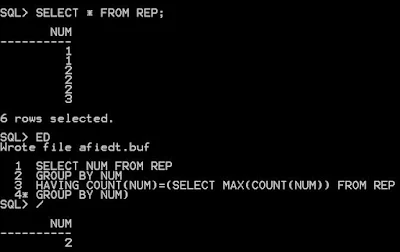Source:
CREATE TABLE FILENAM(FILENAME VARCHAR2(200));
INSERT INTO FILENAM VALUES('FILE1/\:');
INSERT INTO FILENAM VALUES('FILE1/?<');
INSERT INTO FILENAM VALUES('FILE1/?>');
INSERT INTO FILENAM VALUES('FILE1/?|');
INSERT INTO FILENAM VALUES('FILE1/?=<');
INSERT INTO FILENAM VALUES('FILE1/?<,');
INSERT INTO FILENAM VALUES('FILE1/?<*');
INSERT INTO FILENAM VALUES('FILE1/\:*?<>|=,');
INSERT INTO FILENAM VALUES('FILE1/\:*?<>|$=,');
COMMIT;
Query:
Output:
CREATE TABLE FILENAM(FILENAME VARCHAR2(200));
INSERT INTO FILENAM VALUES('FILE1/\:');
INSERT INTO FILENAM VALUES('FILE1/?<');
INSERT INTO FILENAM VALUES('FILE1/?>');
INSERT INTO FILENAM VALUES('FILE1/?|');
INSERT INTO FILENAM VALUES('FILE1/?=<');
INSERT INTO FILENAM VALUES('FILE1/?<,');
INSERT INTO FILENAM VALUES('FILE1/?<*');
INSERT INTO FILENAM VALUES('FILE1/\:*?<>|=,');
INSERT INTO FILENAM VALUES('FILE1/\:*?<>|$=,');
COMMIT;
Query:
Output:























